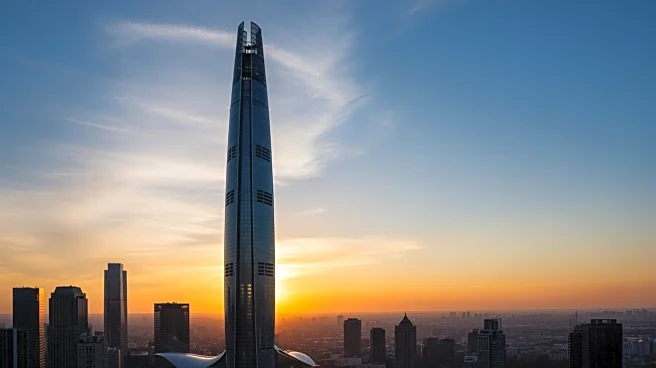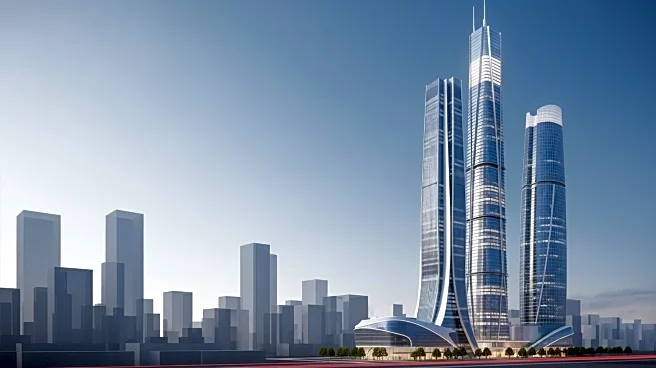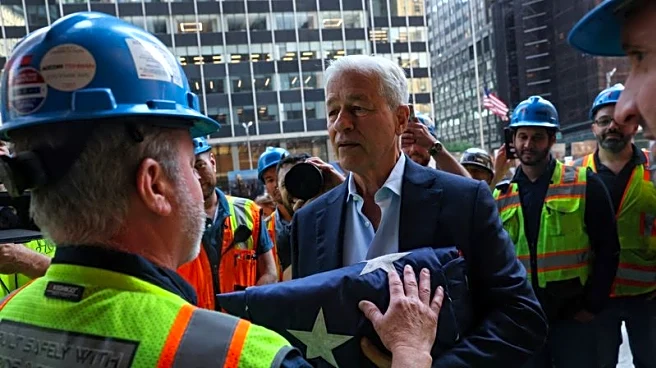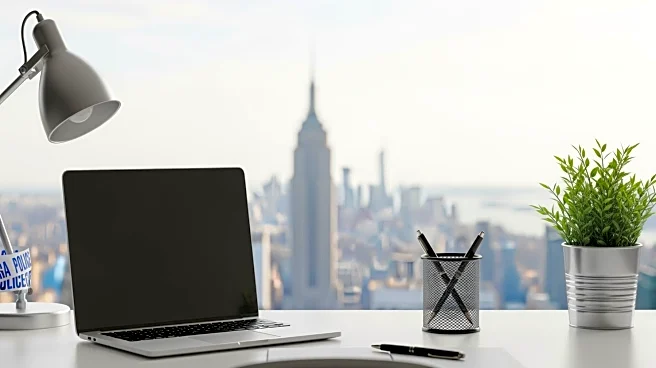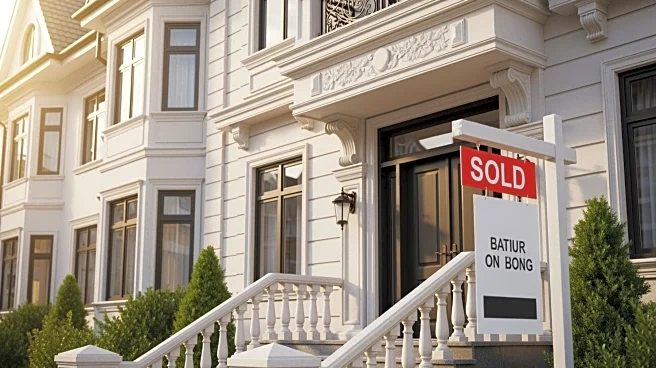What's Happening?
JPMorgan Chase has officially opened its new 60-story headquarters at 270 Park Avenue, New York City, replacing the historic Union Carbide Building. The new structure, costing $3 billion, is designed to accommodate
approximately 10,000 employees, consolidating JPMorgan's operations that were previously spread across multiple locations. The building features 2.5 million square feet of space, including public areas and newly commissioned artworks. The architectural project, led by Foster + Partners, involved a complex demolition process due to its location above major rail lines. The new headquarters is now one of the tallest buildings in Manhattan.
Why It's Important?
The opening of JPMorgan Chase's new headquarters is a significant investment in New York City, reflecting the company's commitment to its employees and clients. This development is crucial as it represents a major post-pandemic construction project, potentially influencing future corporate real estate strategies. The consolidation of operations into a single building is expected to enhance efficiency and collaboration within the company. Additionally, the headquarters serves as a symbol of JPMorgan's stance on in-office work, amidst ongoing discussions about remote work in the corporate world.
What's Next?
Following the completion of the new headquarters, JPMorgan Chase plans to renovate its building at 383 Madison Avenue. This renovation is part of the company's strategy to optimize its office spaces in New York City. The new headquarters is set to become a central hub for JPMorgan's trading operations, potentially impacting the financial district's dynamics. The building's opening may also influence other corporations to reassess their office space strategies in response to changing work patterns post-pandemic.
Beyond the Headlines
The construction of JPMorgan Chase's new headquarters highlights the transformation of New York City's skyline and the architectural challenges of building in urban areas. The project emphasizes the integration of public spaces and art in corporate environments, contributing to the city's cultural and aesthetic landscape. The building's design and construction process may set new standards for sustainable and innovative architectural practices in future developments.
